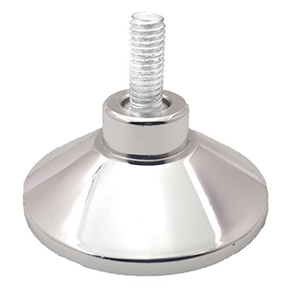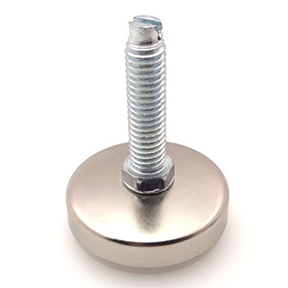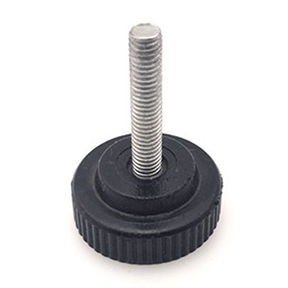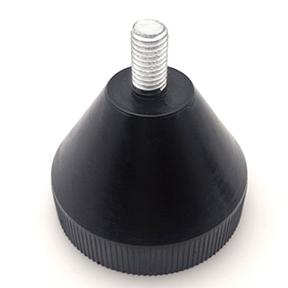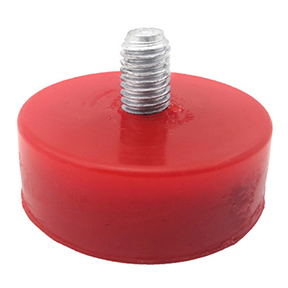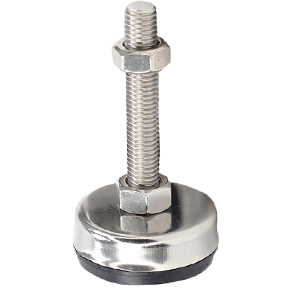Abstract: hand meat is like most Mongolians, the most common traditional food, Heilongjiang Mongolian people have retained this diet, its production and consumption characteristics and other similar Mongolian; hand meat for thousands of years in Mongolia family survive natural geographical environment and the inevitable product of production and lifestyle, once in the history of the evolution of the Mongolian played out far-reaching long-term and positive cultural impact; market economy era, hand meat restaurant industry has become the main meal of Mongolian goods One of the development of tertiary industry Mongolian region, heritage, culture, customs Everbright Mongolian diet has a positive impact.
Keywords: hand meat; Mongolia; Heilongjiang
CLC: C950. 12 Document code: A Article ID: 1004-4922 (2012) 05-0151-04
Hand meat, Mongolian called "Wulan Yi was the root", also called "Le cloth together" or "show here", Chinese can be translated as "red food", which is called steppe nomads considerable antiquity. Hand meat for thousands of years, although like most Mongolians, the most common traditional food, but usually are talking about multi-fingered hand meat mutton. Heilongjiang province's total population of Mongolian population of less than 0. 5%, and non-staple food staple consumed Mongols and Han also no different. However, this diet custom hand meat, preserved only in the Mongolian and Han and other ethnic groups have learned the appropriate production methods, and very fond of. Mongolia common hand meat to restaurants hotels banquets, if the guest of honor, then there must be roasted whole lamb. With the rise of tourism, handle the meat and roast whole Mongolian traditional dietary practices also will flourish. Ancient Mongolian hand meat to cattle, sheep, horses, camels, Mongolian gazelle, roe deer, deer and other animals to eat based. Song envoys Peng Daya in his "black Tartar birthplace" wrote: "The meat rather than grain. Hunting derived who said Rabbit, said deer, wild pig, saying, said ground squirrel, said stubborn sheep (formerly Note: Its spine can scoop), said Gazelle (formerly Note: Its dorsal yellow tail, such as fans big), said Broncos (formerly Note: If donkey-like), said Heyuan fish (the original note: the cold can cause). husbandry and kitchen are in Yang is a constant, cattle, followed by non-banquet, not punishment horse. Huoliao by ten of nine, tripod cooking by twelve three. "Today, Mongolian hand meat mainly beef and mutton. Heilongjiang main producing sheep, which handle more choice of sheep meat, especially the use of fine-wool sheep. Heilongjiang Mongols as "soft Horqin ten flag" as part of the primary production in Mongolia hand meat, eat with the entire Horqin basically the same.
One, hand meat, roasted whole lamb production methods
Mongols slaughtered sheep, or from the neck without a knife stabbed the heart, but put his hand into the sheep's chest, pull off the artery. This method does not drain the blood, do not pollute the environment. Xie Yang, only with a knife, and never use the ax, such as "Paodingjieniu" without all the sheep-like head, capability, and a whole sheep should be decomposed into a set number of how many blocks are there for.
1. Stew. After peeling the sheep, goat or cut or full-sized blocks, wok cooked with water. Over the past without salt, and now people will add a little salt. Some family practice can be further detailed, first boiled again, remove Xuemo, generally cook eighty-nine ripe for good, never Dunlan. 2. Stew. After the sheep cut into the pot, simmer for eight mature anxious, and then go the extra scoop soup, plus some pepper, cinnamon, soy sauce, salt and other seasonings, cover the pot small fire slowly burn, burn no basic soups then stew better.
3. Sun. The cattle and sheep meat stripping stripping Eviscerate, remove fat, tendons, etc., choose lean meat cut into strips, marinated with salt, and then drying dried, steamed with Shredded eat, are also considered hand meat (now multi- beef). Ancient times, people even summer roasted meat raw.
4. Roast. The whole peeled roasted sheep, or cattle after stripping solution into chunks, put up wood fire in the wood-fired hob on the shelves, the whole or large pieces of beef and mutton sheep hanging on rack baking, sprinkle with salt at the end, when this method is used mostly for picnics.
Compared with the previous several ways, hotel or restaurant yurt made with picnic roast whole different specific procedures are: First, make oven, or drums, or brick, or dig pits, wipe the inside Wong; vats or pull off the base, buckle in the iron stove plate, vats outside brickwork, or a circle or square, cast Wong, also wipe refractory cement. Second, the sheep skinned, or scalding or leave the skin with a blowtorch hair removal, and then dig gutted, washed with water, then soak in a good variety of seasoning simmer cylinder, about soak 2-4 hours. There seasoning pepper, aniseed, cinnamon, coriander leaves, onion and human health effects of Chinese herbal medicine have, these condiments and herbs are good with gauze bags, pre-soak into the tank. Three is a good soak whole sheep, it was hanging in the woods on the drain, put more than 20 raw egg yolk stirred with sesame oil, and put the sheep outside the cavity, and then coated in red pepper at the end all the sheep inside and out. Fourth, oven baked with charcoal, the furnace temperature reached thousands of degrees, to be transparent charcoal burning, smoke put the net, the reuse of water sprayed on the coals, then ready for a lamb. Fifth, with an iron bar to go through the whole sheep, hanging in the oven baking, there are also placed in the chest sheep roasted red pebbles. Grilled sheep body rotating personnel from time to time to make roasted evenly. About a half hour later, the whole roast sheep became. Baked whole sheep smell the smell of leather in reddish yellow, crisp taste, soft and tender meat, fat and not greasy. Heilongjiang Mongolian production, consumption of modern roasted whole lamb from the field after the reform and opening introduction. Since oven roasted whole lamb, and many other conditions needed to produce complicated procedures, so little family restaurant and general production, but can be made separately roast leg of lamb, lamb chops, grilled corbel there, steak, beef chunks. On the use of oven roasted whole lamb, relevant historical records is unknown, according to legend from the Qing Dynasty Emperor Kangxi, the first generation of the king by the Alashan and Rodrigues when he led the troops brought from Xinjiang to relocate Alashan, and later by the third generation of Wang Luo Busang more Seoul Jeju absorption Beijing duck cooking characteristics, and then after 200 years of continuous practice of the masters, before the formation of the unique ethnic flavor Mongolian roast whole.
Second, the Mongolian hand meat, roast whole edible Features
Hand meat, by definition, grabbed his hand to eat meat. As the Mongolian steppe nomads, mostly pastoral habits meals, hand meat mainly for dinner. Now, living in Duerbote people in the area are involved in farming, generally three meals a day, eat breakfast handle meat, but New Year's Eve day except breakfast.
Ancient Mongolian hand meat to eat, mainly dips Wild wild onions or chives wipe. Now, they are introducing a variety of dips, more varieties. In the way of eating, and even the introduction of the Central Plains of food and drink habits, such as eating roast whole, it seems like to eat Beijing roast duck with bread, sauce, spring onion and serve.
Mongolian hand meat eating is a common one hand and the meat in one hand and a knife, cut a piece to eat, do not cut the food, but picking his eating. Very particular about the knife, multi-blade tick meat inwards, not outwards. Pulled to the arms, with the thumb of the hand grasping the meat cut of meat pressed. Mongolian way of this knife has several explanations: first, to pull his arms meat, minced meat or meat oil is not spilled upon others, respect for human beings is the same table. Second, the blade outward, easily hurt. The blade is not out, which means that other people on the table without threats. Mongolian meat eating hand there are certain rituals. They attach related rituals, not only entertain guests in the hotel to follow the hotel is hand meat eating at home, they should also fulfill the relevant rituals, only family feast as an example: hand meat before eating, be sure to wash their hands. Cutter wine, etc. gracefully, subject and object were seated, housewife will hand meat served hot. If guests, the owner should Sheep breast meat (Mongolian called "Break Bo Chu") cut, the first dedicated to the guests. If no guests, to present to family elders to show respect. Because the Mongols that the whole lamb meat sheep chest, the most tender, delicious and easily digestible sections. This ceremony called the offer "Dege Ji", called "De Geji" Mongolian there "first bite", "uppermost", "most holy" means. After the liturgy, we only hands-on meat, drink. Dining room, guests would like juniors or young, older people offering holy hada. Hada mostly white, and blue. During the meeting, there are people such as lamas, to sacrifice yellow hada. Hada at the same time toast. Specific rituals, the juniors or young hands to hold Hadad, put the glasses left palm, left leg bent 90 degrees, right knee touch the ground, head slightly, his hands over his head. There, the elder man took the glass, the use of the left hand cup three times with his right ring finger dipped in wine, Respect, Respect, the King ancestors. Then, the guests, the elders who recite congratulatory (Mongolian called "Jade hot music"), as congratulatory prose in general. According speaking, mostly congratulatory elders teach the younger generation, and pray for them, the guests are mostly congratulatory wishes of the owner. To the guests, the elders who hada, toast, could be singing and dancing. Now, if no guests to visit, eat at home peers handle meat has been relatively free, but toast song at is still there.
Mongolian eat hand meat, meat on the bones require light to eat tick the net, and the bone marrow dry, no residue left over meat. Its purpose, first, delicious meat on the bones, and calcium-rich; two are not wasted. Mid-13th century, the Italian ambassador to the Mongol Empire comes to Mongolian diet bishop taxi Binney said: they put meat on the bones to eat two thousand __ net, in the bone marrow was exhaustion before, threw the bones allowed dogs.
Whole lamb roasted whole lamb broiled same (decomposed into chunks cooked in wood plate placed into whole sheep) is the most sumptuous Mongolian diet. All the sheep seats, also known as whole sheep seats (Mongolian called "Le cloth together"), after processing the whole sheep is placed in a large rectangular wooden tray, lying like a live sheep. Guests before the meal, the same should hold a certain ceremony. To recite the host or hosts offer whole sheep's message, Mongolian for "cloth Wo 勒因玛格塔拉." Then, the master and the guest of honor along with tasting meat sheep back cut, also called offer "Dege Ji." At this time, the same table knife before people eat meat. In the past, all the sheep who freely cut by the whole table to eat. Now in order to enjoy convenient, and more from the chef knife to change.
All the sheep feast was the guest of honor Mongolian traditional cuisine, but also the Mongolian oldest and most grand a feast, generally only in a grand banquet, a grand assembly, or wedding reception decorations when high-level dignitaries. According to historical records, Genghis Khan had set off all the sheep feast. Kublai Khan ascended the throne, also located all the sheep feast festival gods, to be guests. To the Qing Dynasty, the whole sheep feast is more prevalent, has become rare in Mongolia VIP reception dishes. In ancient times Heilongjiang Duerbote regions, there is a special hand meat-eating rituals or methods. Every year on July 15 for the Mongolian Buddhist traditional festivals, Fu Yu Zhengjie Duerbote flag Temple Temple will hold large-scale festivals, during which the faithful worship would like to donate hand meat. Instant, lamas in several special large wok (Mongolian called "High Mountain Jin Tao") in dozens of whole sheep cooked stew, cooked Houjia Mi for hand meat mixture with Rouzhou available thousands of believers while dining.
Heilongjiang hand meat eating Mongolian Mongolian customs and other similar areas, more famous hand meat feast of "all the sheep feast" (Mongolian called "Le cloth together"), "Kaoquan Feast" (Mongolian called " Hao Kronig day that ")," Little whole sheep feast "(Mongolian called" Haga Si show Adams ")," half sheep feast "(Mongolian called" nest day Spengler show Adams' multi-purpose sheep lumbar, right forelimb, left hind leg swing show Adams, when placed in front forelimbs, hind legs, the top buckle waist), "full waist Feast" (Mongolian called "cloth together Reuben investigation show Adams", also known "Wu Cha feast." placed, it will be after the sheep lumbar upwards, and with thoracic, shoulder, four long ribs, tibia, etc., and then be decorated with milk food), "short waist Feast" (Mongolian called "Ao Call Erwu investigation show Adams, "the upcoming sheep midfielder removed from the tail upwards Gengu five holiday reservations three backs, flourished in the wooden dish, with thoracic tibia fenced then be decorated with milk food)," scapular feast "( Mongolian called "Trat show Adams" is a Mongolian cuisine), "forelimb Feast" (Mongolian called "Hain show Adams" is a Mongolian cuisine).
There are also some special requirements of the feast. Such as: "Sheepshead Feast" (Mongolian called "Tao Lu cover show Adams" is used throughout the Sheepshead pendulum Adams show, this show is generally used for sacrificial altar Sri Lanka), "four ribs Feast" (Mongolian called " Trat are Japanese ondor show Adams' maternal side of this feast taboo entertain relatives), "hip bone Feast" (Mongolian called "Suzy Dunda its wooden frame show Adams" is a Mongolian cuisine, mainly entertain female guests), "chest Feast" (Mongolian said "the amount of cloth out show here", is a Mongolian cuisine, mainly entertain female guests), etc. Third, the Mongolian hand meat diet custom hand meat as cultural influences traditional food, a few Mongolian survive for thousands of years the natural geographical environment and natural product production and lifestyle. The traditional dietary practices, worked in the history of the evolution of the Mongolian play a profound and positive impact on culture.
1. Mongols provide the necessary conditions to survive and multiply. Rise in Mongolia Mongolian plateau, nomadic no fixed, known as "horse nation", hand meat is the main food of Mongolian survive and multiply. Both former Mongol period, Mongolian national community formation period, or the Yuan, Ming and Qing Dynasties, live in Mongolia Mongolian plateau prairie, where the high latitude, dry and cold, extremely harsh natural conditions, it is difficult farming, almost not produce grain, vegetables. According to historical records, when only Wanggu portion adjacent to the Western Xia because so engaged in farming, and rarely engaged in fishery production. Liao and Jin Dynasties, moved Songnen River Wu-speed Mongolia and ancient bud side Qianguo'erluosi tribe had engaged in fishing for North Tinggong East Pearl. The biggest advantage of the Mongolian Plateau is vast prairie, where the lush, "wind-swept pastures of cows and sheep." Ancient Mongolian Plateau dense forests, livestock and hunting therefore become their main industry. Mongolian sheep production is the main target, main products also sheep, beef and mutton consumption as its main food.
Health to share not only meat, but also nutrition the body. According speaking, meat is rich in protein, fat, trace elements and other substances necessary for human health, the nutritional value of lamb is even higher. In general, the most nutritious meat nutrients undoubtedly proteins. Not only meat protein content is high, and because it contains amino acids the body needs, and the ratio appropriate, the body can absorb and use good, belonging to high-quality protein category. The fat content of meat for people to bring a lot of energy, but also the brain works is an important material. In addition, the meat is also rich in minerals, including potassium, sodium, calcium, magnesium, sulfur, phosphorus, iron, zinc and other major elements and trace elements. Especially iron contained in meat, heme iron is present in the form of easily absorbed by the body, is an important source of iron in the body. Meat food or human B vitamins main dietary source of vitamin A and biotin is and an important source of folic acid. Mongolian hand meat greatest feature is either roasted or boiled, cooked food layer a layer, not only fresh and delicious, and time-saving, more suitable for nomadic life. Known due to the nomadic Mongolians, coupled with geographical constraints, kitchenware production and use than backward, difficult kuai system for meat, not fry cook farming nation, only hand meat eating is the most suitable. This is different from the farming nation's dietary practices, has become a Mongolian diet advantage. Hand meat "green" to ensure the health of the Mongols. For thousands of years, raising a hand meat Mongolian people, and promote the healthy propagation Mongols, from generation to generation prosperous.
2. Provides for the establishment of the Mongol Empire military convenience. Since the system
A Mongolian plateau, Genghis Khan and his descendants continue to campaign, expedition southward across the Eurasian continent to establish a vast Mongol Empire, and its political, economic, cultural positive significance, ancient historians and modern scholars have been out of , this is no longer dwell on. People called Genghis Khan as "God of War", and its contribution to the world's military science, the researchers are also more elaborate. Among them, the Mongol army "flow" granary in the special role of the military operations, it is thorough, full of praise. Always war, troops and horses, forage first. Logistics Supply especially food supply, and morale of combat is a prerequisite. From a certain point, which determines the victory of the war. Chinese history, many times due to grain Road fire, burning granaries which led to the Battle of failure cases, too numerous to mention. Mongolian hand meat eating because this particular dietary practices for the Mongol army to establish a "flow" to create the conditions granary. Every war, the Mongol army to army drove cattle herd action, fast and convenient, plus they are almost all the Colts, so the operational and tactical effects are obvious. It is because of "Wulan Yi was the root" (red food), "Chagan Iraq was the root" (parasites), the Mongolian army before the formation of the "Mongolian cyclone" and eventually victorious, invincible.
3. After entering the market economy the economic and cultural impact. Hand meat
The Mongolian traditional food in a market economy as the Mongolian restaurant industry is one of the main food products, the development of Mongolia's tertiary industry, especially for heritage, culture and customs Everbright Mongolian diet has a positive impact. With the Heilongjiang region's economic development, market prosperity and flourishing tourism industry and people's living standards improve, hand meat as a specialty food for the community, and constantly adapt to the modern pursuit of nutrition, health, green ideas, is becoming a showcase Mongolia The best family food culture window, its development was gaining momentum. Mongolian cultural origins a long, Mongolian traditional food culture also contains rich socio-economic value. As China's commodity economy, Mongolian food culture charm appeared again. Since Mongolia there are some differences between the various regions, which is much room for improvement and development. With the further development of the catering industry in Mongolia, people with rich raw materials, improving cooking skills, make sure that the Mongolian hand meat diet more in line with contemporary tastes demand, and with the unique charm of the restaurant industry Zailingfengsao. __


